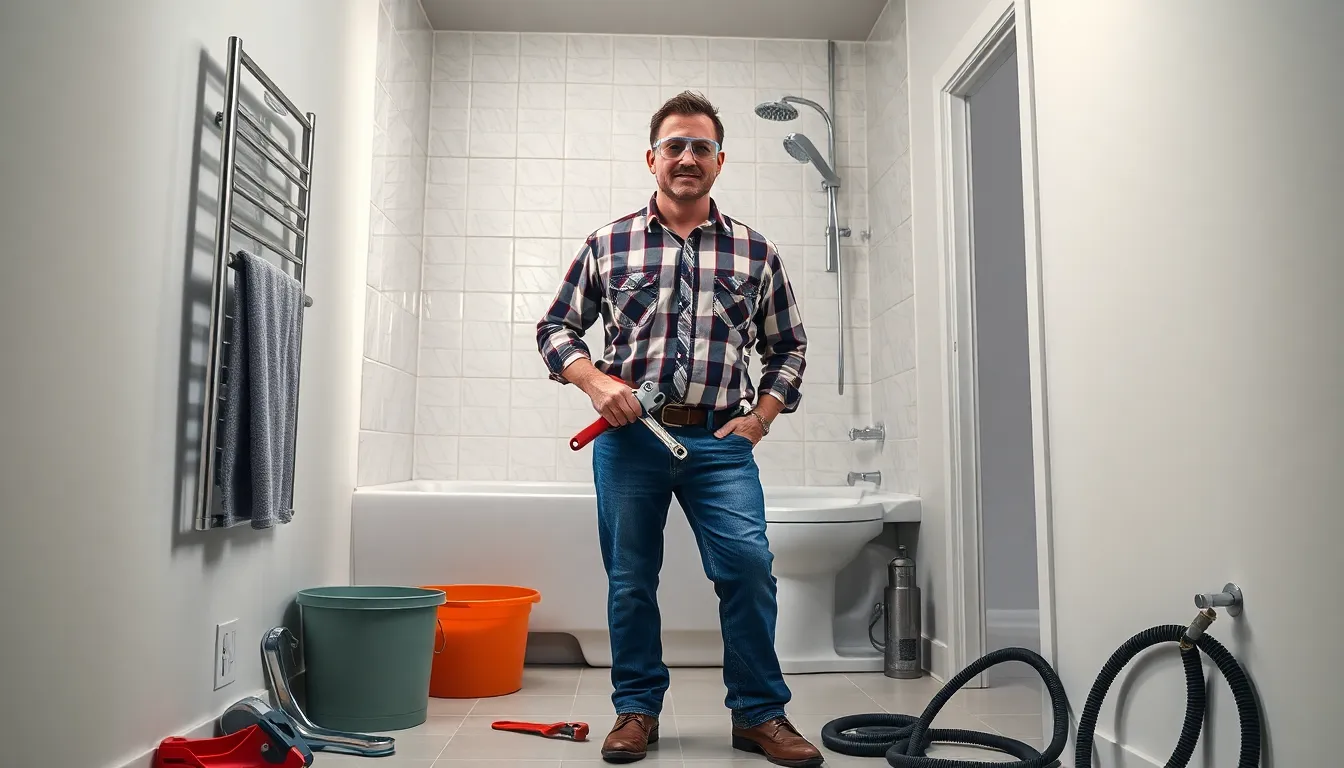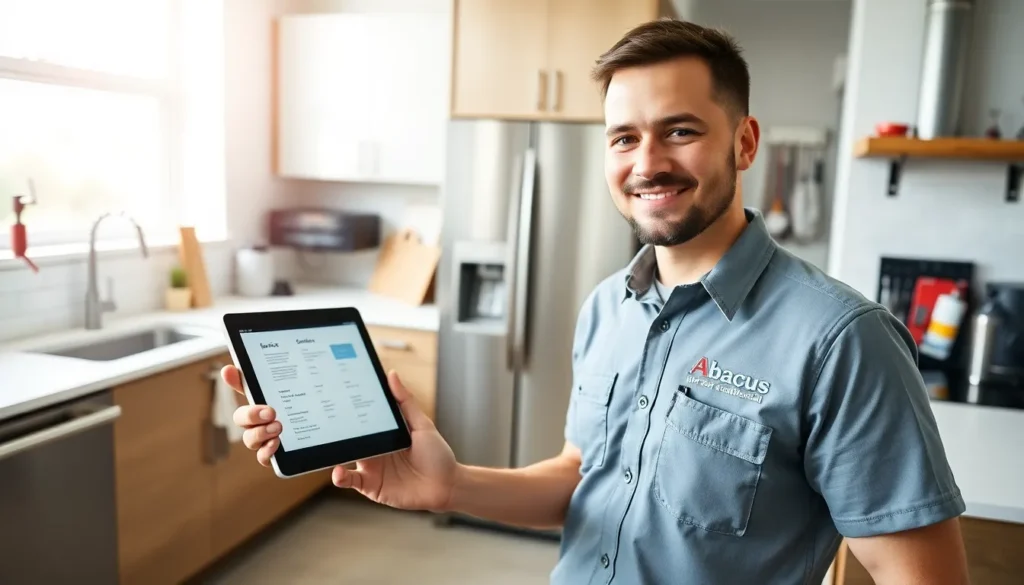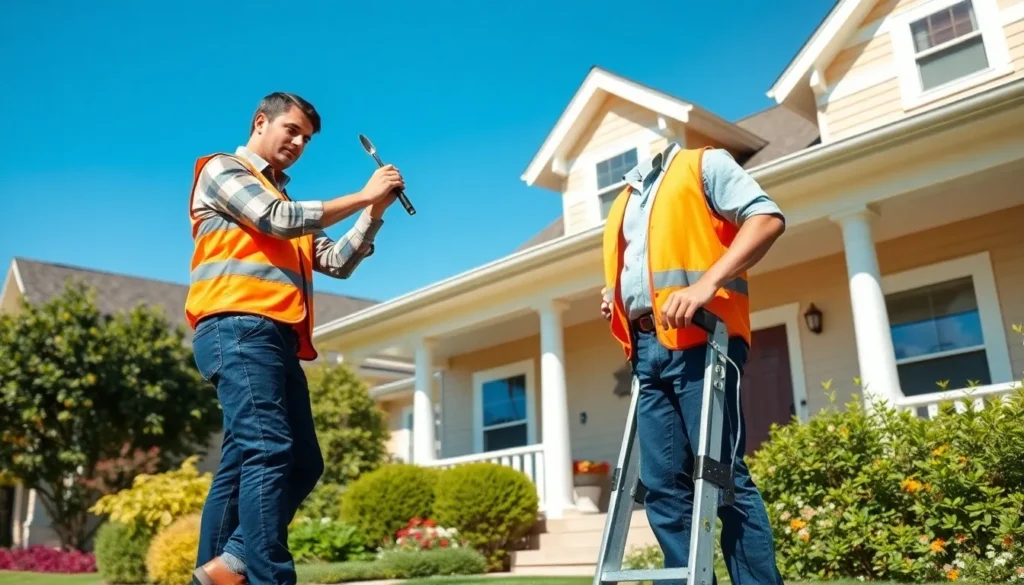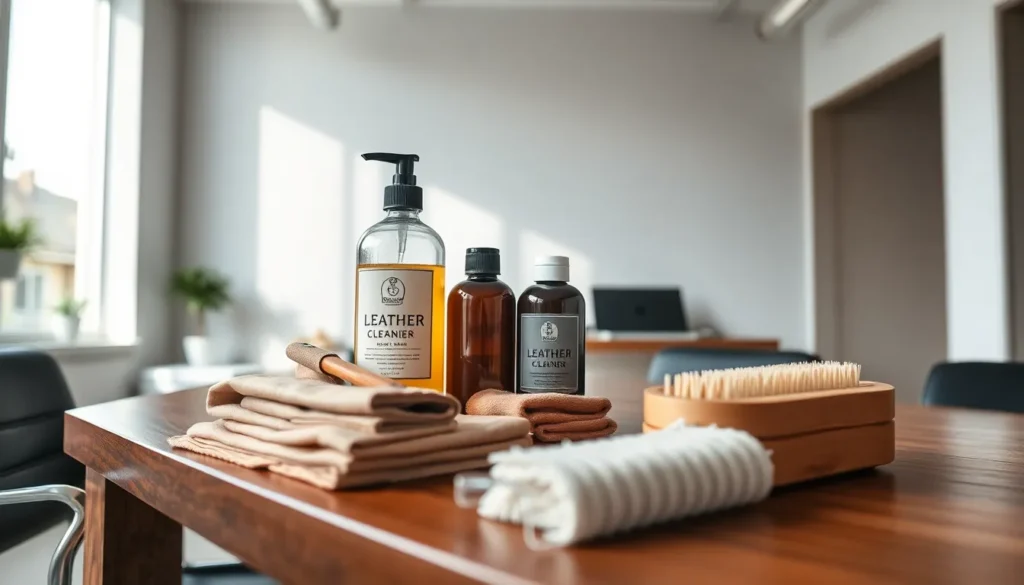Home plumbing often goes unnoticed until something goes wrong. From leaky faucets to clogged drains, plumbing issues can disrupt daily life and lead to costly repairs. Understanding the basics of home plumbing not only empowers homeowners but also helps them tackle minor problems before they escalate.
In a world where DIY solutions are increasingly popular, knowing a few plumbing essentials can save time and money. Whether it’s learning how to fix a running toilet or understanding the importance of regular maintenance, everyone can benefit from a little plumbing knowledge. This article will explore common plumbing issues, practical tips for repairs, and preventative measures to keep systems running smoothly.
Table of Contents
ToggleUnderstanding Home Plumbing
Home plumbing plays a crucial role in daily life. Proper knowledge of plumbing systems can help homeowners prevent and address issues effectively.
Importance of Proper Plumbing
Proper plumbing ensures functionality and efficiency in a home. It prevents water damage, promotes hygiene, and enhances overall comfort. Addressing plumbing issues promptly can save homeowners from costly repairs. Understanding the plumbing system also empowers homeowners to recognize problems early and take proactive measures.
Common Plumbing Systems
Common plumbing systems in a home include:
- Water Supply System: Delivers clean water to fixtures and appliances.
- Drainage System: Removes wastewater from sinks, showers, and toilets.
- Vent System: Allows air pressure to balance, ensuring wastewater flows smoothly.
- Fixture Installations: Involves sinks, faucets, toilets, and bathtubs that require regular maintenance.
- Sump Pumps: Prevents basement flooding by directing water away from the foundation.
Understanding these systems allows homeowners to maintain and troubleshoot effectively, ensuring a well-functioning plumbing environment.
Essential Plumbing Tools and Equipment

Essential plumbing tools and equipment enable homeowners to tackle minor plumbing issues efficiently. Having the right tools on hand prevents simple repairs from becoming costly problems.
Recommended Toolkits for Homeowners
- Basic toolbox: A sturdy toolbox should contain essential tools such as wrenches, pliers, and screwdrivers.
- Pipe wrench: A pipe wrench provides a secure grip on pipes, making it essential for tightening or loosening fittings.
- Adjustable wrench: An adjustable wrench offers versatility for various sizes of nuts and bolts found in plumbing fixtures.
- Plumber’s snake: A plumber’s snake effectively clears clogs in drains or toilets, preventing plumbing backups.
- Tape measure: A tape measure aids in precise measurements for replacement parts or installations.
- Plumbing auger: A plumbing auger allows homeowners to remove stubborn clogs deep within plumbing lines.
- Safety goggles: Safety goggles protect eyes during repairs, keeping them safe from debris and potential chemical splashes.
Maintenance Tools You Should Have
- Basin wrench: A basin wrench reaches difficult-to-access locations under sinks, making it vital for faucet installations.
- Pipe cutter: A pipe cutter provides a clean cut on pipes, ensuring proper seals during repairs or upgrades.
- Teflon tape: Teflon tape seals threaded connections, preventing leaks in plumbing joints.
- Plumber’s putty: Plumber’s putty creates watertight seals around fixtures, securing them against leaks.
- Cleaning brush set: A set of cleaning brushes helps maintain drains and pipes, ensuring efficient water flow.
- Bucket: A bucket collects water during repairs, minimizing mess and preventing damage to the surrounding area.
- Flashlight: A flashlight illuminates dark spaces, making it easier to inspect plumbing systems, especially in basements or crawlspaces.
Common Plumbing Issues in Homes
Home plumbing issues can disrupt daily routines and result in costly repairs if not addressed promptly. Recognizing and resolving these problems enhances the efficiency and longevity of plumbing systems.
Identifying Leaks and Repairs
Leaks occur when water escapes from pipes, fixtures, or fittings, often causing water damage. Homeowners can identify leaks through the following methods:
- Visual inspection: Check for puddles or water stains on ceilings or walls.
- Monitor the water meter: A rising water meter reading while water isn’t in use indicates a leak.
- Listen for dripping sounds: Unusual noises from pipes can signal a hidden leak.
Common repair methods include tightening fittings, replacing washers, or using pipe sealant for small leaks. For significant issues, contacting a professional plumber ensures proper resolution.
Clogged Drains and Solutions
Clogged drains result from debris accumulation, leading to slow draining or complete blockages. Homeowners can address clogs through these approaches:
- Plunger use: Utilize a plunger to dislodge minor blockages in toilets or sinks.
- Drain snake application: Insert a plumber’s snake to reach deeper clogs in the drain lines.
- Hot water method: Pouring hot water down the drain may break down grease and soap residue.
For persistent clogs, employing enzymatic drain cleaners or seeking professional assistance provides comprehensive solutions. Regular maintenance, such as using strainers and avoiding throwing food waste down the sink, prevents future clogs.
Professional vs. DIY Plumbing
Understanding the distinctions between professional plumbing services and do-it-yourself (DIY) plumbing can help homeowners make informed decisions regarding their plumbing needs.
Benefits of Hiring a Professional
Hiring a professional plumber offers numerous advantages.
- Expertise and Experience: Professionals possess the necessary training and experience to handle various plumbing issues efficiently.
- Advanced Tools: Professionals use specialized tools and equipment that might not be accessible to homeowners, ensuring accurate repairs.
- Safety Assurance: Professionals adhere to safety guidelines, reducing the risk of accidents and injuries during plumbing repairs.
- Warranty: Many professional services provide warranties on their work, offering peace of mind in case of future issues.
- Time Efficiency: Professionals complete repairs quickly, minimizing disruption to the household’s daily routine.
When to Attempt DIY Repairs
Homeowners can attempt DIY repairs when the issues are minor and manageable.
- Simple Leaks: Fixing small leaks by tightening fittings or using sealants often proves effective.
- Clogged Drains: Clearing minor clogs with a plunger or drain snake can easily be done without professional help.
- Toilet Issues: Replacing a toilet flapper or adjusting the flush mechanism typically requires basic skills.
- Faucet Repairs: Changing a faucet washer or cartridge is usually an achievable task for most homeowners.
- Regular Maintenance: Routine tasks like cleaning aerators or replacing showerheads fall within the DIY scope and promote plumbing efficiency.
Homeowners should assess the complexity and severity of the plumbing issue before deciding to engage a professional or attempt a DIY approach.
Seasonal Plumbing Maintenance Tips
Seasonal maintenance ensures plumbing systems operate efficiently throughout the year. Regular checks prevent costly issues and promote longevity in home plumbing systems.
Preparing for Winter
Preparing plumbing for winter prevents freezing pipes and subsequent damage. Homeowners should:
- Insulate pipes: Foam insulation sleeve covers protect vulnerable pipes from freezing.
- Drain outdoor faucets: Removing hoses and shutting off valves prevents trapped water from freezing.
- Seal leaks: Check for areas where cold air enters, sealing any gaps in walls, doors, or windows.
- Let faucets drip: Allowing a slight drip in extreme cold keeps water flowing, reducing freeze risk.
- Know your main water shut-off: Familiarizing oneself with shut-off locations aids quick response to emergencies.
Spring Plumbing Checkup
Spring checkups refresh plumbing systems after winter weather. Homeowners should:
- Inspect for leaks: Check under sinks and around toilets for signs of moisture and potential leaks.
- Clear away debris: Remove debris from gutters and downspouts to ensure proper drainage.
- Test sump pumps: Run sump pumps to confirm they function correctly before heavy rainfalls.
- Check water heater: Inspect the water heater for leaks and sediment buildup, flushing as needed.
- Examine toilets: Test toilet tanks for leaks by adding food coloring; if it seeps into the bowl, repair is necessary.
Regular seasonal checks reduce risks and maintain an effective plumbing system year-round.
Understanding home plumbing is essential for every homeowner. It empowers individuals to tackle minor issues before they escalate into costly repairs. By familiarizing themselves with plumbing systems and essential tools, homeowners can maintain their plumbing effectively and ensure their homes run smoothly.
Regular maintenance and prompt attention to problems can significantly enhance the longevity and efficiency of plumbing systems. Whether opting for DIY repairs or seeking professional help, being informed is key. With the right knowledge and tools, homeowners can confidently manage their plumbing needs and enjoy a more comfortable living environment.









